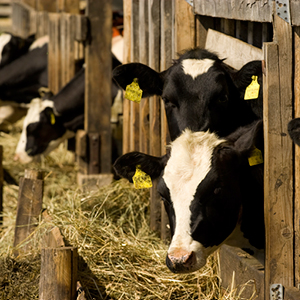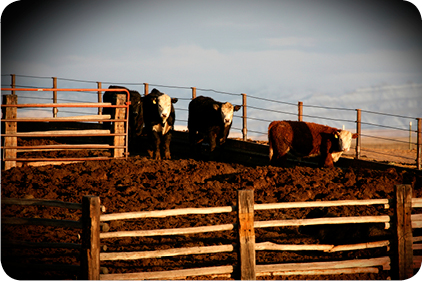Depending on your specific sector of the industry, E. coli O157:H7 may come from the cattle in your feedlot, the hides and digestive tracts of the cattle you slaughter in your plant, the combo of beef trim you will be further processing, or the box of frozen patties in your retail display. So, depending on your place in the meat industry, E. coli may come from an animal, a hide, a digestive tract, a combo or a box. If your source of the issue is the combo or box, it may be time to investigate the pathogen’s origins.

|
E. coli O157:H7 is a bacterium that naturally inhabits the large intestine of cattle. Not all cattle are carriers of the pathogen, and the occurrence of animals that shed the bacteria in their feces varies greatly. A study1 of shedding prevalence in Irish beef cattle found 1.7% to 18% of cattle in the study to be shedders. Other studies have found similar variability.2 3
Research has shown that the major risk factor in E.coli O157:H7 carcass contamination is a contaminated hide. To help prevent and remediate cross-contamination, multiple procedures are used during the slaughter process. Some of these include the use of hide-wash cabinets after stunning and bleeding, knife sterilizers and knife rotation procedures to allow ample sterilization time, steam pasteurizers, steam vacuums, and hot water and organic acid carcass washes. To ensure that the pathogens that came into the plant on the animal do not make it to the cooler, combinations of these intervention steps are implemented. Ultimately, the efficacy of the intervention strategies is at least partly dependent on the pathogen loads on the hides of the animals at the time of slaughter. This is where management, animal welfare and behavior, and food safety collide.
An interesting study4 was conducted in 2004, in which six confirmed E. coli O157:H7 shedding Holstein-Friesian steers were introduced — one per pen — to six pens of five non-inoculated Holstein-Friesian steers to study how the pathogen was transmitted. The authors found that the water troughs, pen barriers and some of the hides of the non-inoculated steers tested positive within 24 hours of the introduction of the shedding animal. Within 48 hours, 66% of the animals had hide swabs that tested positive. The authors also video-taped the behavior of the cattle. They reported an average of 13 bouts of grooming in each of the six pens per hour. From this study, it appears that the hide is a vector in inoculating new animals with E.coli O157:H7, and the animals can easily ingest the pathogen by licking themselves or pen mates during grooming. In addition, environmental contamination can be a factor in transmitting the pathogen, as cattle commonly lick the barriers and structures within their pens. This study was conducted in a facility that was much smaller and more confined than typical North American feedlot systems, but it helped to confirm the interaction of environmental and hide contamination with grooming behavior.
Multiple research studies have focused on the impact of transportation and pre-slaughter lairage on the incidence of E. coli O157:H7 on the hides of cattle. There is disagreement over whether transportation increases or decreases the amount of animals that shed E. coli O157:H7, but a growing consensus believes hide contamination increases as transit distance increases. A group of researchers5 with the USDA Meat Animal Research Center reported that E. coli O157:H7 prevalence on the hides of feedlot cattle increased from 50.3% of animals at the time of loading to 94.4% of animals at hide removal in the plant. The cattle were hauled approximately 125 miles from the feedlot to the packing plant. Another study6 found that cattle on loads hauled greater than 100 miles were twice as likely to test positive on hide swabs upon arrival at the slaughter establishment than cattle on loads hauled less than 100 miles. Lairage pen cleanliness also was a risk factor: Cattle held in pens with fecal contamination were three times more likely to have positive hide swabs than cattle held in pens that were cleaned prior to lairage. The researchers found that the greatest risk factor for
E. coli O157:H7 hide contamination was the presence of the pathogen in the lairage pen prior to cattle occupancy. Cattle were eight times more likely have a positive hide swab when E. coli O157:H7 was found in the pen before a load of cattle was placed in the pen.
We can all agree that food-safety interventions are necessary throughout the slaughter process to prevent pathogens from making it to the cooler. However, the ultimate efficacy of the intervention steps depends, to a great extent, on the pathogen load that exists on the carcass before the interventions are applied. Recent research has identified a couple of pre-slaughter factors that can help to reduce the E. coli O157:H7 loads coming into the slaughter establishment on cattle hides.
Interestingly, they also can impact animal welfare. If we let the data speak, the take-home message is this: Keep your pens clean and hauls as short as possible.
The concerns of food safety, management and animal welfare battle for
position in the pre-harvest fight against E. coli O157:H7.





